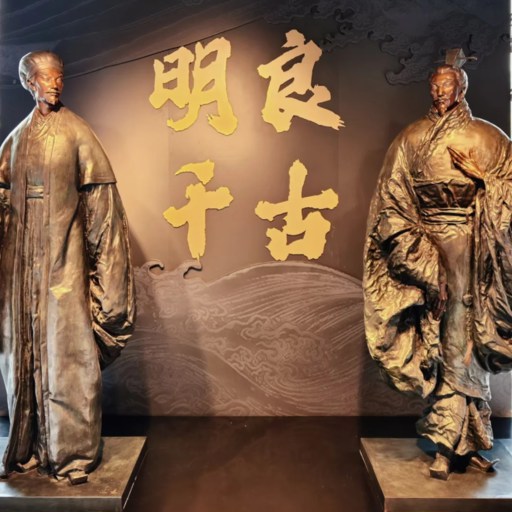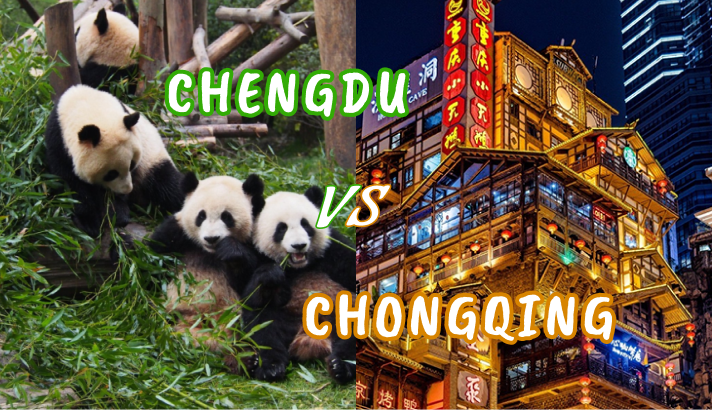Chengdu draws travelers in with a charm that’s hard to put into words. It’s not just one thing—it’s the spicy food, yes, but also the relaxed pace, centuries of layered history, and the way locals seem to enjoy life with quiet confidence. From steamy hotpot restaurants to ancient shrines, from tea houses to panda sculptures climbing downtown malls, Chengdu is a city where old legends and modern life coexist. It’s a place where you can learn about the Three Kingdoms in the morning and try dragon boat festival food in the evening. If you’re seeking more than photo ops—if you want flavors, feelings, and stories—you’ll find them here.
Where Can You Find the Best Food in Chengdu?
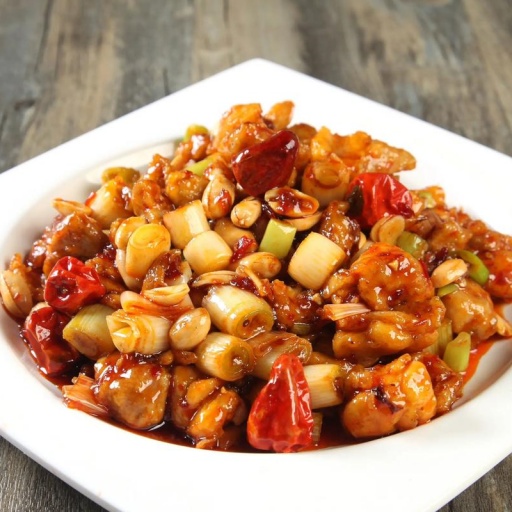
Kung Pao Chicken
The Real Deal: Chengdu-Style Hotpot
When it comes to things to do in Chengdu, savoring the famous Chengdu-style hotpot is top of the list. This isn't just a meal; it's a cultural adventure. Picture sitting around a bubbling pot filled with fiery red chili oil, Sichuan peppercorns, and fragrant herbs. The hotpot restaurants here aren't shy about spice—locals adore the mouth-numbing sensation from the peppercorns. If you're not ready to dive fully into spice territory, the classic yin-yang pot (鸳鸯锅) is perfect—half spicy, half mild. This combo lets everyone at your table enjoy Chengdu’s iconic dish, no matter their spice tolerance.
Choosing the dipping sauce is an art itself. Unlike northern China’s sesame-based sauces, Chengdu locals favor simple oil-based sauces known as “油碟.” These little bowls of sesame oil, garlic, coriander, and spring onion cool down the spice and elevate the flavor. Don't hesitate to ask locals about their favorite hotpot places—many will passionately recommend traditional spots like Shujiuxiang or Huangcheng Laoma. These restaurants don't just serve fantastic food; they're lively social hubs. You'll see families, friends, and colleagues chatting and laughing over steaming pots—a genuine cultural experience that's definitely among the best things to do in Chengdu.
Hotpot dining in Chengdu isn't merely about the taste. It’s about the communal atmosphere, conversation, and laughter shared around the table. Street-side spots often stay open till late, adding to the vibrant nightlife. After dinner, take a leisurely stroll around nearby streets filled with teahouses, dessert stalls, and bustling markets. Chengdu-style hotpot is undoubtedly a culinary highlight, providing a delicious, authentic, and memorable taste of local life. Simply put, skipping Chengdu hotpot means missing out on one of the ultimate things to do in Chengdu.
More Than Hotpot: From Kung Pao Chicken to Dan Dan Noodles
While hotpot often steals the spotlight, Chengdu’s culinary scene goes far beyond that. Among the many delicious things to do in Chengdu, sampling classics like Kung Pao Chicken (宫保鸡丁) and Dan Dan Noodles (担担面) is a must. Kung Pao Chicken was named after Ding Baozhen, a Qing dynasty official who loved the dish. Today, restaurants still prepare it authentically—tender chicken chunks stir-fried with peanuts, chili peppers, and a tangy, spicy sauce. Locals swear by humble eateries like Chen Mapo Tofu Restaurant and Mingting Xiaochi, which serve amazing renditions.
Dan Dan Noodles, another street food legend, is equally irresistible. Named after street vendors who carried their noodle baskets (“dan”) on poles, these noodles are mixed with spicy sauce, minced pork, and crushed peanuts. One bowl isn't enough; you’ll likely order seconds. For something lighter, try Longchaoshou—small dumplings in clear broth—or sweet potato noodles soaked in spicy sauce. Chengdu’s snack culture is vibrant, casual, and deeply connected to its people. Every bite feels like an invitation into local life, making these snacks essential things to do in Chengdu.
In Chengdu, even tiny eateries pack big flavors. Local chefs master balancing spicy, numbing, sour, and sweet. Each dish reflects Chengdu's carefree yet precise culinary culture. Don’t limit yourself; be adventurous! Wander into crowded alleyway eateries or bustling food markets, and try whatever smells good. Chengdu’s cuisine provides endless surprises, each dish rich in flavor and culture, easily making food-tasting among the most satisfying things to do in Chengdu.
Want to know which hotpot spots define Chengdu’s flavor? Iconic 5 Chengdu Hotpot Restaurants Worth the Heat — From Street Classics to Modern Legends of Spice lists the city’s best picks.
Where Locals Go for Late-Night Snacks
If you want a taste of Chengdu’s vibrant nightlife, hitting up local late-night snack spots is one of the essential things to do in Chengdu. As the sun sets, the city springs to life with bustling street food markets. Here, locals and visitors alike gather around sizzling woks, steaming pots, and charcoal grills. Head to streets like Jiuyanqiao or Yulin—these are where Chengdu natives flock after dark. You'll find everything from spicy barbecued skewers (串串) to chilled bowls of tofu pudding (豆花).
A local favorite is Bobo Chicken (钵钵鸡), skewers of chicken and vegetables marinated in spicy sauce. Each skewer is small, perfect for tasting multiple flavors without filling up. Vendors line tables along streets, inviting you to grab a seat, pick skewers, and enjoy a late-night snack under neon lights. Pair your skewers with cold noodles, refreshing cucumber salads, or crispy potato cakes. Chengdu’s late-night food is more than a snack—it’s an immersive, authentic local experience, ranking high among the things to do in Chengdu.
Another must-try is tofu pudding—fresh, silky tofu served warm or cold with spicy or sweet toppings. Tofu pudding stalls are simple but full of charm. Locals often sit nearby chatting and eating leisurely into the night. Afterward, stroll nearby streets and alleyways filled with teahouses and late-night cafes. Late-night snacking in Chengdu offers an incredible mix of socializing, people-watching, and culinary adventures. It’s a casual, fun, and delicious way to blend into local life. Without doubt, it ranks highly among the most authentic things to do in Chengdu.
After exploring the busy streets, unwind at Inside Chengdu People’s Park: The Place That Defines the City’s Slow Charm — the city’s heart of leisure.
What Are the Top Cultural Things to Do in Chengdu?
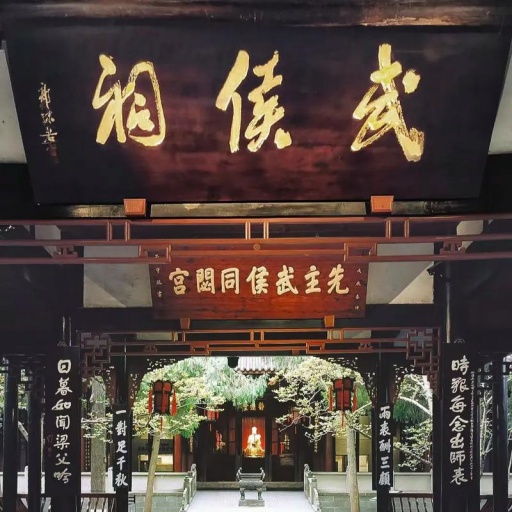
Wuhou Shrine
Visit Wuhou Shrine and Trace the Footsteps of Zhuge Liang
If you're into history, visiting Wuhou Shrine is among the top things to do in Chengdu. This shrine honors Zhuge Liang, the legendary strategist from the Three Kingdoms era. Strolling beneath the ancient trees, you'll see statues, carved stone tablets, and historic architecture. Murals depict Zhuge Liang’s wisdom, valor, and unwavering loyalty. Inside, you can even check out genuine relics like ancient weaponry and maps. It's an atmospheric place, blending history and tranquility seamlessly.
What makes the shrine particularly memorable is its cultural vibe. You'll see locals burning incense, tourists examining detailed exhibits, and kids eagerly learning history. Throughout the year, Wuhou Shrine hosts cultural events, from poetry readings to calligraphy exhibitions. These bring a lively atmosphere to the quiet grounds. Visiting during festivals like Qingming gives you extra insights into local customs and traditions. It's one of those authentic things to do in Chengdu that'll immerse you in the spirit of old China.
Once you step out, don’t miss Jinli Ancient Street, adjacent to Wuhou Shrine. This vibrant alleyway is packed with snack stalls, souvenir shops, and teahouses. Try the famous zongzi—sticky rice wrapped in bamboo leaves and shaped like a triangle. They're everywhere, especially during the Dragon Boat Festival. Grab a snack, explore crafts shops, and soak in Sichuan opera melodies drifting through the street. Wuhou Shrine and Jinli together create an ideal blend of cultural exploration and foodie adventure, definitely top things to do in Chengdu.
Want to dive deeper into Chengdu’s Three Kingdoms history? Read Wuhou Shrine Chengdu: The Timeless Legacy of the Three Kingdoms and uncover its living legacy.
Watch Sichuan Opera and Face-Changing Shows
Watching Sichuan opera is absolutely one of the coolest cultural things to do in Chengdu. Unlike traditional Chinese opera, Sichuan opera features a stunning technique known as face-changing, or "bianlian". Performers swiftly swap colorful masks, leaving audiences bewildered. The Sichuan Opera Theater and Shufeng Yayun Theater are excellent choices for catching this mesmerizing performance. Both venues blend traditional seating and intimate atmosphere, making your experience truly authentic and memorable.
What’s particularly fascinating is watching performers effortlessly change their masks in a blink—how do they do it? This closely guarded secret technique symbolizes emotions and characters shifting rapidly within the drama. Alongside mask changes, expect thrilling acrobatics, humorous dialogues, fire-spitting stunts, and traditional Chinese music. You’ll leave feeling energized and culturally enriched. Trust me, this unique art form is a must-do among the top things to do in Chengdu, and locals will always recommend it.
Theaters often have adjacent teahouses where you can sip jasmine tea while waiting for the show. Sichuanese snacks like spiced peanuts and sunflower seeds often accompany performances, creating a relaxed yet lively vibe. Attending these operas isn’t just entertainment—it’s a deep dive into the region's cultural identity. It connects you directly to Sichuan’s artistic heritage. So, put Sichuan opera high on your Chengdu bucket list and prepare for an unforgettable night out. It's easily one of the most distinctive things to do in Chengdu.
Discover Tibetan Culture in Little Lhasa of Chengdu
Among the most distinctive things to do in Chengdu is exploring Little Lhasa, the vibrant Tibetan quarter near Wuhou Temple. This area bursts with colorful prayer flags, Tibetan craft stores, and eateries serving authentic Tibetan food. Visit local shops brimming with handcrafted jewelry, prayer wheels, and traditional clothing. The warmth and openness of the Tibetan community make every visit genuinely welcoming. Engage shopkeepers in conversation—they love sharing stories and traditions.
Foodies rejoice, Little Lhasa serves up hearty Tibetan fare. You must try yak meat momos (dumplings), rich butter tea, and Tibetan-style hotpot. Cafés here exude cozy, eclectic charm, perfect for people-watching or chatting with locals and travelers. Little Lhasa is not only delicious but also affordable, making it popular with young locals and expats. It's certainly among the top cultural things to do in Chengdu, blending culinary exploration with cultural immersion.
Besides shopping and eating, check out the Tibetan-style architecture and street murals reflecting cultural pride. Occasionally, you'll catch local events—traditional dances, chanting, or even informal cultural workshops. Visiting Little Lhasa underscores Chengdu's unique role as a melting pot. It highlights the city's inclusive, diverse spirit, effortlessly integrating Tibetan culture into everyday urban life. So if you're seeking things to do in Chengdu that offer cultural diversity, warmth, and fantastic food, Little Lhasa deserves your attention.
How to Plan the Perfect 4-Day Chengdu Itinerary?
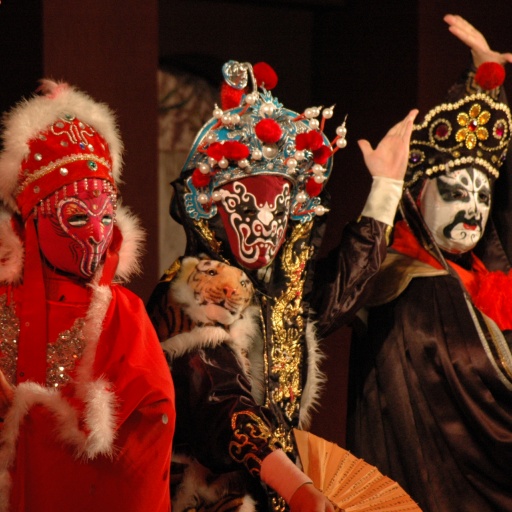
Sichuan opera performance
Day 1 – Local Parks, Alleys, and City Buzz
Kicking off your Chengdu adventure right means diving straight into its lively city center. One of the coolest things to do in Chengdu is visiting Chunxi Road, the vibrant shopping heart of the city. Don't miss the famous panda sculpture at IFS—this giant climbing panda is everyone's selfie spot. From designer boutiques to local shops, Chunxi Road buzzes with life. Here, you’ll feel Chengdu’s energy instantly, perfect for capturing the city’s modern vibes and local trends.
Next, stroll over to Kuan Zhai Alleys, the charming narrow streets packed with history. These old lanes perfectly blend tradition and modern comforts. You can sip jasmine tea at cozy teahouses, taste spicy skewers from street vendors, or just snap photos of beautifully restored Qing dynasty buildings. The alleys embody Chengdu's leisurely lifestyle—laid-back yet vibrant. Spend your afternoon soaking up the relaxing vibe, easily ranking this among the best things to do in Chengdu.
Wrap up the day at People's Park. Locals love coming here for tea, mahjong, and music. The teahouse here is particularly famous, where sipping tea and people-watching is practically a local sport. Nearby, Tianfu Square showcases modern Chengdu with impressive architecture and evening fountain shows. People gather around to enjoy performances, adding to the dynamic atmosphere. Day one perfectly balances Chengdu’s old charm with contemporary life, setting a wonderful tone for your three-day stay and making it one of the ideal things to do in Chengdu.
Beyond Chunxi Road and Kuanzhai Alley, Shopping in Chengdu 2025: Uncover Markets, Malls & Things To Buy What You Want shows you the city’s other shopping havens.
Day 2 – Morning With Pandas, Then a Giant Buddha
Start your day with one of the most heartwarming things to do in Chengdu—a morning trip to the Chengdu Research Base of Giant Panda Breeding. The earlier you go, the better. Pandas are most active before 10 a.m., munching on bamboo, climbing play structures, or napping in the trees like oversized plush toys. The park is lush, quiet, and incredibly well-maintained. It doesn’t feel like a zoo—it feels more like a peaceful bamboo forest with the world's most chill residents.
Walk through shaded trails where red pandas roam, check out the baby panda nursery, and stop by the museum to learn how these iconic animals were brought back from the brink. Signs are bilingual, and staff are helpful. Whether you're traveling solo or with family, the visit is pure joy. Locals say if you haven’t seen pandas, you haven’t really been to Chengdu—and it’s true. This experience is fun, meaningful, and absolutely photo-worthy.
After the panda base, head back to your hotel for a short rest or grab a quick Chengdu-style lunch—cold noodles or spicy wontons work great. Then, hop on a high-speed train to Leshan, ready for your afternoon with one of China's most iconic cultural landmarks. A short ride brings you face-to-face with the Leshan Giant Buddha, carved over 1,200 years ago and standing 71 meters tall. Wander riverside paths or join a boat tour for stunning panoramic views. This combo of wildlife wonder and spiritual heritage makes Day 2 unforgettable and well-balanced among the top things to do in Chengdu.
Day 3 – Temples, Jinli, and Opera Night
Your final day highlights some quintessential cultural things to do in Chengdu. Begin at Wuhou Shrine, immersing yourself again in ancient history and tranquil gardens. Immediately next door is Jinli Ancient Street, vibrant and bustling. Packed with snack stalls, shops, and teahouses, Jinli captures Chengdu’s lively spirit perfectly. Taste local delicacies like rabbit heads, zongzi, and dan dan noodles. Every corner offers unique crafts, local artists, and performances—keeping visitors constantly entertained.
In the afternoon, venture to Little Lhasa, Chengdu's Tibetan quarter. Colorful prayer flags, fragrant Tibetan tea, and friendly shopkeepers warmly welcome you. Browsing handcrafted items or savoring yak meat dishes connects you deeply with Chengdu’s cultural diversity. Little Lhasa encapsulates the city's inclusive spirit, broadening your cultural understanding and enhancing your list of things to do in Chengdu.
End your three-day adventure with a Sichuan opera performance, highlighting dramatic face-changing shows. Shufeng Yayun Theater or Sichuan Opera Theater offers the most authentic experience. Watching performers swiftly swap masks is fascinating and unforgettable. Combine your opera evening with authentic Sichuan food nearby. It’s the perfect cultural finale—lively, flavorful, and genuinely memorable. Completing your Chengdu journey this way ensures you’ve truly experienced the best cultural, culinary, and historic things to do in Chengdu.
What’s the Best Time to Visit Chengdu?
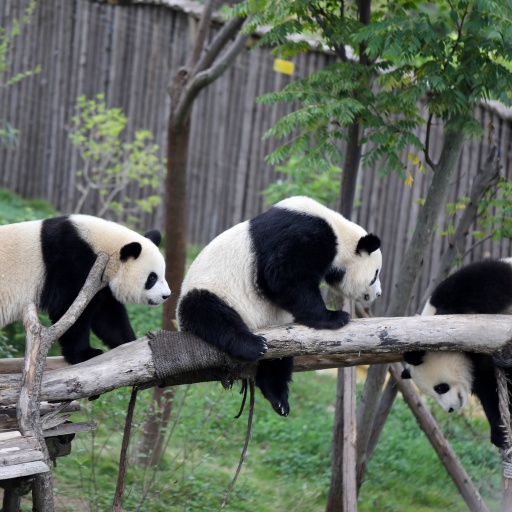
Chengdu Pandas
Pleasant Spring and Autumn, Lively Summer Vibes
Spring and autumn offer some of the best moments to savor Chengdu. From March to May, the city gently awakens from winter. Blossoms paint parks like Baihuatan and People's Park in fresh colors, making leisurely strolls delightful. Grab a cup of tea at local teahouses where regulars sit chatting, playing cards, or mahjong. Snack stalls sell seasonal favorites like triangle-shaped zongzi—sticky rice bundles wrapped in bamboo leaves—that you'll spot everywhere. Pleasant temperatures make exploring historic sites, such as Wuhou Shrine and Kuan Zhai Alley, relaxed and enjoyable, undoubtedly among the most delightful things to do in Chengdu.
Summers, while hot and humid from June through August, offer a vibrant energy unmatched by other seasons. Despite the daytime heat, evenings transform the city into a foodie paradise. Bustling night markets around Jiuyanqiao and Yulin buzz with stalls offering spicy cold noodles, skewers, and chilled tofu pudding—perfect snacks to beat the heat. Locals flood the streets late into the night, sharing food, laughter, and stories under neon lights. It's an authentic glimpse into local Chengdu life, making summer evenings distinctly memorable and vibrant.
Besides city adventures, summer is an excellent time for day trips. Qingcheng Mountain and Leshan Giant Buddha become lush, green retreats offering cooler temperatures and breathtaking natural beauty. These places provide refreshing escapes, complementing the bustling city experience. So, if you're after great weather, blooming flowers, or lively street scenes with unbeatable food, Chengdu's spring, autumn, and summer seasons provide wonderful opportunities to truly appreciate the city's charm.
Warm Winter Comforts: Hotpot and Hot Springs
Winter months, from December through February, bring a completely different yet equally appealing side of Chengdu. Though chilly, the temperatures rarely dip below freezing. The slightly colder weather is perfect for indulging in hotpot—arguably Chengdu’s most beloved culinary experience. Gather with friends around bubbling pots of spicy broth filled with Sichuan peppercorns and chili oil, warming both body and soul. The communal atmosphere of hotpot dining is especially enjoyable in winter, fostering lively conversations and joyful gatherings. It ranks among the warmest, most comforting things to do in Chengdu in the colder months.
Beyond hotpot, winter is prime time for relaxing at hot springs near Mount Emei or Qingcheng Mountain. Imagine soaking in steaming mineral waters, surrounded by tranquil mountains and peaceful nature. It’s a luxurious way to unwind, soothe tired muscles, and enjoy the serene beauty of Sichuan’s natural landscapes. These hot springs perfectly balance outdoor freshness and comforting warmth, making winter visits to Chengdu both soothing and invigorating.
The festive season in Chengdu during winter months also brings out vibrant traditions and celebrations. Streets become beautifully lit for festivals like Chinese New Year, creating a lively, festive atmosphere throughout the city. Temples host special ceremonies, while markets burst with holiday treats and festive crafts. Engaging in these winter celebrations provides an authentic glimpse into Chengdu’s cultural richness and communal spirit. If you’re seeking festive warmth, delicious comfort foods, and cozy relaxation, Chengdu’s winter season presents some genuinely delightful experiences, making it a perfect time to visit.
For practical tips on tickets, routes, and the best times, you can always check this Chengdu Panda Zoo guide.
How Do You Get Around Chengdu, China?
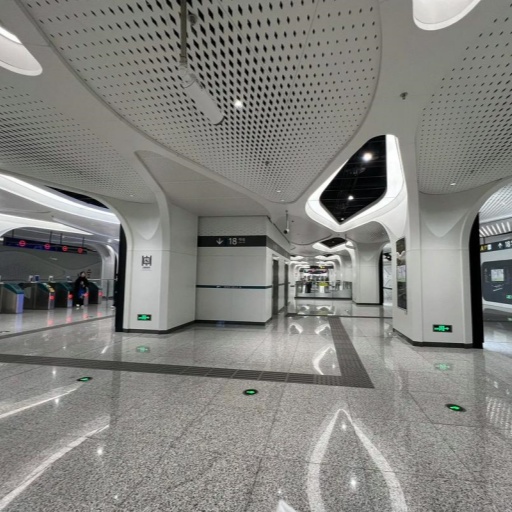
Chengdu Metro Station
Chengdu’s metro system is the easiest way to move around the city. It’s fast, reliable, and covers nearly all major sights. With over a dozen active lines, it connects spots like Chunxi Road, Taikoo Li, the Panda Base, and even both airports. Each line runs frequently, with minimal wait times even during weekends. Signage inside stations and trains is bilingual—Chinese and English—so navigation is straightforward. If you’re planning to hit multiple tourist stops, the metro is a smart and hassle-free choice.
Step inside any metro station and you’ll immediately sense the modern, high-tech vibe. Halls are spacious and bright, with sleek finishes, digital art displays, and smart lighting. At larger stations, interactive maps and touchscreen kiosks help you plan routes fast. Many stops feature unique local elements—like panda murals or Sichuan opera masks—but still maintain a futuristic feel. Security checks are quick, and gates open via facial recognition or QR scan. You don’t need a metro card if you’re using Alipay or WeChat Pay. Air-conditioning, strong phone signal, and USB charging stations in some waiting areas all add comfort to the ride.
The metro is incredibly affordable and saves you time. Most rides cost just 2–6 yuan depending on distance. Transfers between lines are easy and clearly marked. Stations are placed near parks, temples, shopping zones, and nightlife areas—perfect for short walks between sights. Compared to taxis, it avoids traffic jams and keeps your travel budget low. Buses may get confusing, but Chengdu’s metro is smooth even for first-time visitors. It’s the locals’ favorite and definitely the best way to navigate Chengdu without stress.
Frequently Asked Questions (FAQs)
Q: Where should you stay in Chengdu, China?
A: Stay near the city center for easy access to everything. Chunxi Road is ideal if you love shopping and a busy vibe. This area has both budget hostels and fancy hotels. It’s walkable, and the IFS panda sculpture is right there. For quieter nights, stay near Wuhou District. You’ll be close to Jinli Street, Wuhou Shrine, and peaceful parks. The Tibetan quarter is also nearby. If you want something trendy, book a room around Taikoo Li. This spot blends stylish hotels, rooftop cafés, and boutique stores. Many young locals hang out here. If you're watching your budget, try guesthouses around Yulin or Kehua North Road. These areas feel residential but still lively. You'll find local eats, vintage shops, and bars. They’re safe, with good subway access too. Don’t stay too far out unless you speak Chinese well. Transit can get tricky. Always check if your hotel offers airport pickup. Also, ask if they help with booking opera tickets or local tours. Some hostels even host dumpling nights or tea tastings. Pick a spot that suits your pace. Chengdu isn’t about rushing. Choose a base that lets you walk, snack, and chill. That’s the real joy of being here.
Q: Where can you find vegan food in Chengdu?
A: Finding vegan food in Chengdu takes some planning but it’s doable. Many Buddhist temples run quiet restaurants that serve tasty plant-based dishes. Try Wenshu Monastery’s canteen for peaceful vibes and tofu-heavy meals. For casual spots, check out Vegan Cave or Mi Xun Teahouse inside The Temple House Hotel. Both have creative dishes like mapo tofu with mushrooms or vegan hotpot. At local restaurants, just say “no meat, no egg, no milk” in Chinese. That’s “不要肉,不要蛋,不要奶.” Many places won’t have a vegan menu, but staff usually try to help. Also, stick to veggie dumplings, cold dishes like cucumber salad, or spicy potatoes. Chengdu's street food scene is meat-heavy, so ask questions before you order. Hotpot? Choose mushroom or tomato broth, and load up on lotus root, tofu skin, and greens. Bring your own dipping sauce if needed. Apps like HappyCow help locate vegan places too. Vegan eating in Chengdu might not be perfect, but it’s rewarding. You'll taste real local flavors without breaking your rules. And who knows? You might inspire curious locals to ask what you’re eating.
Q: How do you get to Chengdu, China?
A: Getting to Chengdu is pretty straightforward. Most travelers fly into Chengdu Tianfu International Airport. It’s modern, big, and handles flights from Asia, Europe, and beyond. From the airport, you can take the subway, a taxi, or a direct bus. If you're in China already, high-speed trains are a fun option. Cities like Xi’an, Chongqing, and Kunming connect fast. The train ride from Xi’an takes about four hours. It’s smooth and scenic. Trains arrive at Chengdu East or Chengdu South Station—both near downtown. Long-distance buses are cheaper but slower. They’re fine for short hops like from Leshan or Emei. Always book tickets early during Chinese holidays. Use apps like Trip.com or China Railway 12306 (with translation help). For peace of mind, try booking through your hotel. They often help with schedules and station names. Keep your passport handy when buying or collecting tickets. Once in Chengdu, signs are bilingual. Staff usually help even if they speak little English. Getting here is just the first step—save your energy for what’s next. Chengdu has a way of making arrivals feel easy and relaxed.
Q: How many days should you spend in Chengdu?
A: Three full days hit the sweet spot for most travelers. One day lets you explore the city’s heart—think Chunxi Road, People’s Park, and Kuan Zhai Alley. Walk around, sip tea, eat street snacks, and get a feel for the city's slow rhythm. On day two, take a trip to Leshan to see the Giant Buddha. The ride is short, the view is unforgettable, and the hike down the cliff is worth it. Return in the evening and chill at Taikoo Li or grab late-night snacks at Yulin. On your third day, go deep into culture. Start at Wuhou Shrine, walk over to Jinli, and enjoy lunch with local flavors. In the evening, catch a face-changing opera show. That’s when Chengdu’s spirit really hits you. If you’ve got more time, great—add a day trip to Mount Qingcheng or soak in a hot spring. You could also spend an extra day just eating, no shame in that. If you're into pandas, visit the base early in the morning when they’re most active. So yes, three days give you a well-rounded experience. But Chengdu’s charm grows on you. Stay longer if you can. You won’t regret it.
Q: Where should you go after visiting Chengdu?
A: Chengdu sits at the heart of western China, so options are wide open. If you love mountains and nature, head to Jiuzhaigou. It's a national park full of lakes, waterfalls, and Tibetan villages. Go in autumn for the best colors. From Chengdu, flights run daily. Or you could take a bus, though it’s a long ride. Prefer something spiritual? Mount Emei is just a few hours away by train. Hike up the mountain or stay in a monastery overnight—it’s peaceful and unforgettable. Want to keep things urban? Hop on a fast train to Chongqing. It’s hot, hilly, and packed with hotpot and night cruises. For something off the beaten track, go west toward Kangding or Tagong. That’s Tibetan country—wide skies, yaks, prayer flags. It’s cooler up there, both in weather and experience. If you’re heading north, Xi’an is another great stop. It’s home to the Terracotta Army and rich with history. Trains from Chengdu make it easy. Wherever you go next, choose based on your mood. Chengdu connects you to culture, nature, and food in every direction. You won’t run out of ideas, only time.
Q: What is Chengdu famous for?
A: Chengdu is famous for three things: pandas, food, and chill vibes. The city runs on slow pace and spicy flavors. It’s the home of giant pandas, and the research base is just a subway ride away. Go early—they nap a lot. Food-wise, you’ve probably heard of hotpot and mapo tofu. But that’s just the start. There’s also dan dan noodles, spicy rabbit heads, and sweet sticky rice cakes. People here love eating, and meals often last hours. That’s the culture. Chengdu also has deep roots in Chinese history. It was once the capital of the Shu Kingdom. Wuhou Shrine and Jinli Street bring that part of history alive. Locals still take pride in being part of the “land of abundance.” Add in Sichuan opera, complete with face-changing magic, and you've got a cultural mix like no other. But ask anyone what makes Chengdu different? They'll say: the chill. Life here moves slower. People linger over tea, talk to strangers, and enjoy their time. That’s why so many visitors never want to leave. Chengdu’s fame isn’t just what it offers—it’s how it makes you feel.
Want more China travel ideas? Check out my city guides on Beijing, Shanghai, Guangzhou, and Chengdu.
